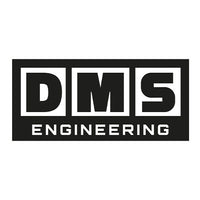Disclaimer
The information provided in these instructions is on an "as is" basis without warranties of any kind, express or implied. The author disclaims all liability for any actions taken or not taken based on this information. Users are responsible for their own actions and decisions based on these instructions. This disclaimer includes, but is not limited to, any direct, indirect, incidental, or consequential damages. By using these instructions, you acknowledge and agree to this disclaimer. If you do not agree, do not use the provided information.
Introduction
Installing a body lift kit is an effective way to elevate the appearance of your vehicle, increase ground clearance, and accommodate larger tires. Whether you're looking to enhance off-road capabilities or simply achieve a more aggressive stance, a body lift kit allows you to customise your ride to suit your preferences. In this comprehensive guide, we'll walk you through the step-by-step process of installing a body lift kit, empowering you to transform your vehicle and take it to new heights.
1. Choose the Right Body Lift Kit
Before you begin, it's crucial to select the appropriate body lift kit for your vehicle:
- Compatibility: Ensure that the body lift kit is compatible with your vehicle's make, model, and year. Research the specific requirements for your vehicle, including lift height and components needed.
- Quality: Invest in a high-quality body lift kit from a reputable manufacturer to ensure durability, performance, and safety.
- Legal Considerations: Check local regulations and laws regarding vehicle modifications, as some jurisdictions may have restrictions on lift heights and modifications.
2. Gather the Necessary Tools and Supplies
Before starting the installation process, gather the following tools and supplies:
- Floor jack and jack stands
- Socket set and wrenches
- Pry bar or large screwdriver
- Lubricant (such as penetrating oil)
- Safety glasses and gloves
- Instruction manual included with the body lift kit
3. Prepare Your Vehicle
Before lifting your vehicle, take the following preparatory steps:
- Park your vehicle on a flat, level surface and engage the parking brake.
- Use a floor jack to lift the front and rear of the vehicle and support it securely with jack stands.
- Disconnect the battery to prevent accidental electrical shorts.
4. Remove the Body Mount Bolts
Next, remove the body mount bolts to prepare for the installation of the lift blocks:
- Spray penetrating oil on the body mount bolts to loosen them, especially if they're rusty or corroded.
- Use a socket set and wrenches to remove the body mount bolts one at a time. Keep track of the location and orientation of each bolt for reinstallation.
5. Install the Lift Blocks
With the body mount bolts removed, it's time to install the lift blocks provided in the body lift kit:
- Position the lift blocks between the body and frame of the vehicle, aligning them with the body mount holes.
- Insert the longer bolts included in the kit through the lift blocks and secure them with washers and nuts. Tighten the bolts to the manufacturer's specifications, alternating between the front and rear of the vehicle.
6. Reattach Body Components
Once the lift blocks are installed, reattach any body components that were removed during the installation process:
- Reinstall any trim panels, brackets, or splash guards that were removed to access the body mount bolts.
- Double-check that all bolts and fasteners are tightened securely and that no components are loose or misaligned.
7. Lower Your Vehicle and Test Drive
After completing the installation, lower your vehicle from the jack stands and perform a test drive to ensure everything is functioning properly:
- Carefully lower the vehicle to the ground using the floor jack.
- Take your vehicle for a test drive to verify that there are no unusual noises, vibrations, or handling issues.
- Monitor the vehicle's alignment and suspension performance, and make any necessary adjustments as needed.
8. Final Inspections and Adjustments
Once you've completed the installation and test drive, perform a final inspection and make any necessary adjustments:
- Check for proper alignment of body panels and components.
- Verify that all bolts and fasteners are tightened to the manufacturer's specifications.
- Make any necessary adjustments to the vehicle's suspension, steering, or alignment to ensure optimal performance and safety.
Conclusion
Installing a body lift kit is a rewarding project that allows you to customise your vehicle's appearance and performance to suit your preferences. By following the steps outlined in this guide and using quality components and proper techniques, you can elevate your ride and achieve the desired look and functionality. Whether you're tackling off-road terrain or cruising the streets, enjoy the enhanced capabilities and head-turning style of your lifted vehicle.



